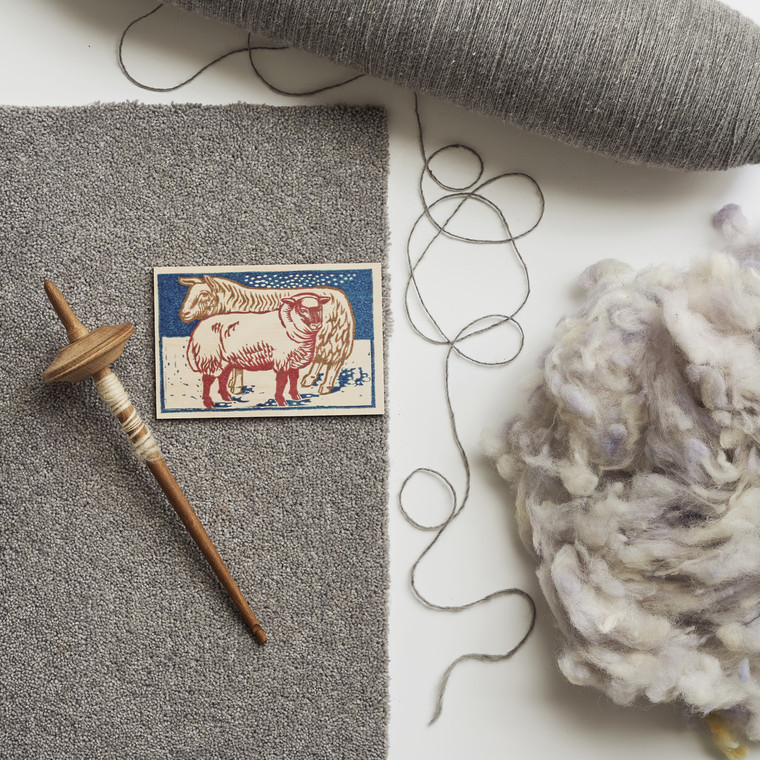Wool Britannia is a 100% British wool yarn that has been developed by the Headlam Group in partnership with British Wool and with the support of the Campaign for Wool, with every linear metre including wool sourced from farms in each of the four home nations.
With wool prices having been deep in the doldrums since the start of the Covid-19 pandemic, British Wool says the aim of the new product, launched in September in Manx Tomlinson’s Seasonal Views wool twist range, is “to increase the usage of British wool in carpets and, in turn, help local farmers and the environment”.
In the South East, sheep farmer Frank Langrish, who farms near Rye in East Sussex and is a former British Wool Chairman, commented: “This is actually a very positive move and may be more significant than we realise.”
{in-brief}
His view was echoed by South East Farmer correspondent Alan West, who described it as “really positive and a good message”, pointing out the importance of carpet manufacture to British Wool and to sheep farmers.
Current British Wool Chairman Jim Robertson explained: “This is an exciting project to be involved in and one we are confident will drive significant demand for genuine British wool carpets. We will be providing ongoing support to ensure the project is a success for all parties, including British farmers.”
Headlam Group General Manager Mike Dobson said Wool Britannia yarn would feature in multiple ranges following its use in Seasonal Views, adding: “We sell to over 8,000 retailers across the UK and initial reaction to the range has been extremely encouraging.”
Frank Langrish pointed out that the British Wool marketing team had been trying various approaches to increase consumption of domestic wool and said it should be able to make the most of a strong price advantage because of the current cost of imports.
“For those few manufacturers that are left, there is a commercial benefit to using more British wool as the cost of importing wool from New Zealand has become very expensive,” he said. “Eighteen months ago, a 20-ton container cost $2,500 US but today it is $18,000.
“Normally the best carpets are an 80% wool and 20% nylon mix. Of the 80% wool element, half is often from New Zealand, so using a 100% British yarn will significantly increase the demand for our wool.”
“Langrish Farmers has been approached by another of British Wool’s licensees, Peregrine, which wants to use wool from Pasture for Life farms for their knitwear. They need the finer wools that are often produced in the South East such as the Romney and some of the Down breeds.
“This is a more important end of the market as it is high value and will make more difference to farmers than promoting wool for insulation. Wool insulation is six times more expensive than Rockwool even when the wool in it is almost for nothing.”
Backing up his optimistic view of British Wool’s efforts, Frank pointed out that the price at the most recent British Wool auction had seen a “significant” 2.5% rise on the previous sale and that 99% of the wool on offer had been sold.
Alan West agreed that focusing on higher value uses was an important move. “This is really positive,” he said. “Hotels and cruise ships are big, important customers for woollen carpets and this sector took a real hit last year.
“Hotels are beginning to come back on stream but demand from cruise liners has been much slower to recover. In general, they will change carpets at least once a year so there is a lot of carpet involved and this can only be good for the UK’s sheep farmers.”
British Wool referred to “continuing strong demand and improving prices” following the fifth sale of the 2021 season. It said that since the start of the year auction prices had increased by over 35%, with the average price in the most recent sale reaching 73p per kilo.




